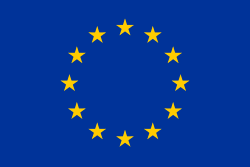Nygrekiska
| Nygrekiska | |
| Νέα Ελληνικά | |
| Talas i | Grekland, Cypern, Albanien (Nordepirus), Armenien, Bulgarien, Egypten (Alexandria), Italien (Salento och Kalabrien), Rumänien, Turkiet, Ukraina (Mariupol) |
|---|---|
| Antal talare | 12 miljoner (2007)[1] |
| Språkfamilj | Indoeuropeiska |
| Grekiska alfabetet | |
| Officiell status | |
| Officiellt språk i | |
| Språkkoder | |
| ISO 639-1 | el |
| ISO 639-2 | gre (B) ell (T) |
| ISO 639-3 | ell |
Nygrekiska är det levande grekiska språket som talas och skrivs i Grekland idag. Det utvecklades via den medeltida bysantinska grekiskan från den gamla eller klassiska grekiskan. Det räknas som ett av de mest ordrika språken i världen, med mer än 600 000 ord.[källa behövs]
Sedan slutet av medeltiden har språket existerat i två former: Dimotiki (Δημοτική, "det folkliga") och Katharevusa (Καθαρεύουσα, "det rena"). Katharevusa är en klassificerad form, som under 1800- och 1900-talet användes i litteratur, juridiska akter, vetenskapliga publikation samt på offentliga dokument. Dimotiki är den vanligaste formen av nygrekiska; denna form ligger nära talspråket, och det är denna form som nu är officiellt språk i Grekland, även om man fortfarande ofta kan se katharevusaformer.
Nygrekiska skiljer sig på många sätt från den klassiska grekiskan, bland annat genom påverkan av andra språk genom medeltiden, samt med stora ändringar i grammatiken.
Källor
- ^ Nationalencyklopedin "Världens 100 största språk 2007"
| |||||||||||||
|
Media som används på denna webbplats
The Flag of Europe is the flag and emblem of the European Union (EU) and Council of Europe (CoE). It consists of a circle of 12 golden (yellow) stars on a blue background. It was created in 1955 by the CoE and adopted by the EU, then the European Communities, in the 1980s.
The CoE and EU are distinct in membership and nature. The CoE is a 47-member international organisation dealing with human rights and rule of law, while the EU is a quasi-federal union of 27 states focused on economic integration and political cooperation. Today, the flag is mostly associated with the latter.
It was the intention of the CoE that the flag should come to represent Europe as a whole, and since its adoption the membership of the CoE covers nearly the entire continent. This is why the EU adopted the same flag. The flag has been used to represent Europe in sporting events and as a pro-democracy banner outside the Union.Lowercase Greek letters alpha, beta, gamma, the first three letters of the Greek alphabet. Times New Roman font.




